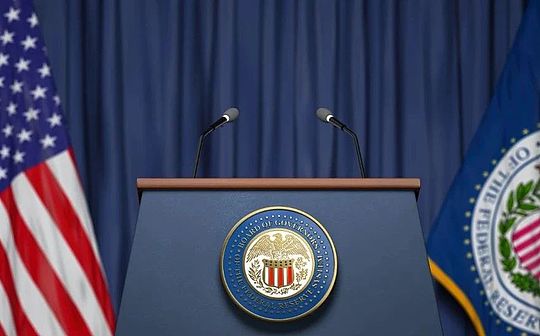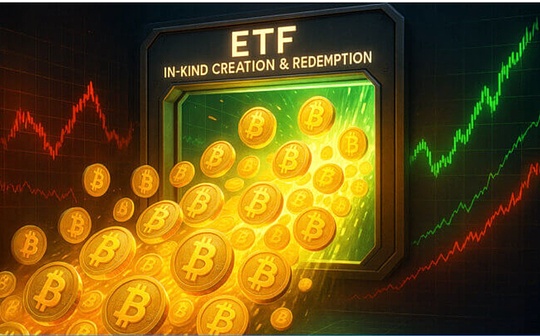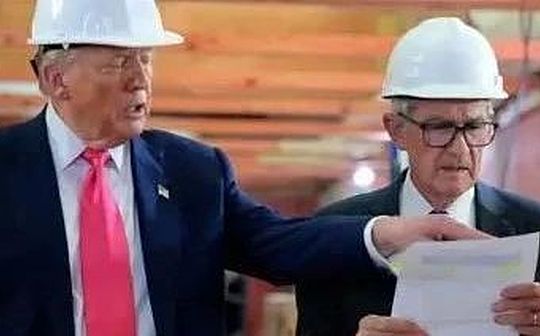
In a word: no interest rate cuts, there are differences, hawkish, etc.
Policy Statement
Although net export fluctuations continue to affect the data, recent indicators show thatEconomic activity growth slowed down in the first half of this year.Unemployment remains low and labor market conditions remain stable.Inflation rates are still rising slightly.
(Translator’s note: GDP data before the announcement showed that Q2’s PDF has declined)
The Commission strives to maximize employment and inflation of 2% over the long term.The uncertainty of the economic outlook remains high.The Committee is concerned about the risks facing its dual mission.
To support its goals, the Commission decided to maintain the target range of federal funds rate between 4.25% and 4.5%.When considering the magnitude and timing of additional adjustments to the target range of federal funds rate, the Commission will carefully evaluate future data, changing prospects, and balance of risks.The Commission will continue to reduce its holdings of U.S. Treasury, institutional debt and institutional mortgage-backed securities.The Commission is firmly committed to supporting maximizing employment and returning inflation to its target of 2%.
In evaluating appropriate positions in monetary policy, the Commission will continue to monitor the impact of new information on the economic outlook.If risks arise that may hinder the Commission from achieving its objectives, the Commission will be prepared to adjust its monetary policy position, as appropriate.The Commission’s assessment will consider a wide range of information, including labour market conditions, inflationary pressures and inflation expectations, as well as financial and international developments.
Those who voted in favor of the monetary policy action include: Chairman Jerome Powell, Vice Chairman John Williams, Michael Barr, Susan Collins, Lisa Cook, Ostan Goulsby, Philip Jefferson, Alberto Mousalem and Jeffrey Schmid.Voting against Michelle Bowman and Christopher Waller,They tend to lower the federal funds rate target range by 0.25 percentage points at this meeting.Adriana CooglerAbsent without voting.
Opening remarks of the press conference
Questioner:Thanks.Thank you, Chairman Powell.There are many people in the market, not to mention the government, who tend to cut interest rates in September now.At this point, is this expectation unrealistic?
Powell: As you know, today we decided to keep our policy rates at the current level, which I describe as modestly restrictive.As I mentioned, inflation is slightly above 2%, even if the tariff effect is excluded.The labor market is solid, the unemployment rate is at an all-time low, financial conditions are loose, and the economy is not performing as a restrictive policy that inappropriately suppresses it.
So it seems to me, and almost the whole committee, that the economy does not perform as a restrictive policy that inappropriately suppresses it, and a moderately restrictive policy seems appropriate.
Having said that, there are downside risks in the labor market, We will receive a lot of data in the coming months, which will help us assess risk balance and appropriate setting of federal funds rates.
Questioner: It’s just a follow-up question.Do you mean the “next months” include the possibility that between now and September meetings, you will basically get two rounds of employment and inflation data.Could this be enough for you to make a decision to cut interest rates at that time?
Powell: You’re right, we do have – this is an inter-meeting period, and before September we’re going to get two full rounds of jobs and inflation data.We haven’t made any decisions about September yet.We won’t do this in advance.When making decisions at the September meeting, we consider this information and all the other information we get.
Questioner: Thank you, Mr. Chairman.You removed the word “uncertainty has diminished” from this statement—or the concept.Does this mean that uncertainty has increased?I wonder, the government has reached some agreements with several big trading partners, and we seem to know now what the tariff rate will be.Do you know that this tax rate will increase your certainty in changing your policy?Or do you need to wait to see the economic impact?
Powell: Basically, the statements about uncertainty in our statement reflect the situation at the last meeting.At the last meeting, the uncertainty dropped a bit, but this time it was more or less flat, so we removed the “has weakened” because it didn’t weaken further, so it was no big deal.
Your second question?
Questioner: Several bills have been reached and it seems we know what the tariff rate with major trading partners will be.Doesn’t this increase certainty?Or are you waiting for the economic effect to appear?
Powell: You are right. For these trade negotiations, this is a very dynamic period, and there are many, many events happening during the meeting.But we are still a little far from seeing things settle.We are obviously getting more and more information, and I think at this point, people’s estimates, our estimates, external estimates of possible effective tariff levels, have not changed much at this point.But at the same time, there are still many uncertainties to be resolved.So, yes, we are learning more and more.But it feels like we are still far from the end of that process.That’s not up to us, but it feels like there will be more things going on in the future.
Questioner: Hi, Mr. Chairman.I’m Axios’ Neal.This morning we received the GDP report,Domestic private procurement finally slowed to its slowest pace in 22 years, and interest rate-sensitive industries such as residential investment and commercial construction have shown weakness.Given the current economic situation, aren’t these signs of monetary policy being too tight at the moment?
Powell: The data of GDP and PDFP (domestic private final procurement) are basically exactly the same as we expected.You have to look at the big picture.So, as I mentioned in my opening remarks, economic activity data, GDP, we think is a narrower but signal for the future and better economic trend, domestic private final procurement has dropped to slightly better than 1%, and I think GDP was 1.2% in the first half of the year.Last year it was 2.5%.So this does drop.
But if you look at the labor market, you will see that, according to many, many statistics, the labor market is still in equilibrium.Like turnover, job openings, not to mention unemployment, they are very similar in many ways to a year ago.So you don’t see the weakness in the labor market.
You do see a slowdown in employment creation, but you also see a slowdown in labor supply.So, you have a equilibrium labor market, although in part because demand and supply for workers are falling at the same rate, which is why unemployment remains roughly stable,This is why I say we do see downside risks in the labor market.Our two mission variables, right, are inflation and maximizing employment.Stabilize prices and maximize employment, not growth.So the labor market looks solid, inflation is above the target, and even if you see through the tariff effect, we think it is still slightly above the target.That’s why our position is now.
But as I mentioned, the downside risks in the labor market are obvious.
Questioner: So, regarding the labor force, considering the supply of mobile labor, is there a number in this job report we will get on Friday that you think is balanced employment growth?
Powell:Mainly unemployment rate.Indeed, in the form of new non-farm employment, the demand for workers has dropped, but the breakven number has also dropped simultaneously.As long as – this puts the labor market in equilibrium.However, it balances through a decline between supply and demand, which I think does hint at downside risks, so we will certainly pay close attention.
Questioner:Thanks.Colby Smith of The New York Times.Your two colleagues are calling for a 25 basis point rate cut today, and I want to know which of their arguments are most persuasive for you and how you weigh your own views against those of the committee members who, based on June forecasts, think the Fed should keep interest rates unchanged for the rest of the year.
As far as the June SEP (Economic Forecast Summary) is concerned, is it still the best representative of the committee’s core ideas?
Powell: Regarding objections, what you want to get from everyone, and from the dissident, is a clear explanation of your thoughts and the arguments you make.We got this today.Basically, it was a good roundtable, and everyone thought about this issue carefully and put their own positions out.
As I mentioned, most of the committee believe that inflation is slightly above the target and maximizing employment is at the target level.In my opinion, this requires a moderately restrictive position now.We have two dissenters who we want to express our thoughts.We did hear it at the roundtable today.
You asked about the June SEP.You know, I won’t-you’re right, it’s written that way, and very likely-I can’t point it to it in six weeks to express people’s thoughts.You can’t do that.We are not running a new SEP, and I don’t want to replace the SEP with my own estimates.We don’t.I’m going to say that we haven’t made a decision on monitoring all incoming data and asking ourselves if the federal funds rate is in the right place.
Questioner: Regarding the policy “moderate restrictiveness”, does this mean that once the conditions for interest rate cuts are met, there is little room for interest rate cuts unless the labor market is significantly weakened?
Powell: Let me say that my own estimate is “moderately restrictive”. There are a range of opinions about what neutral interest rates are in our economy at the moment, and others may say it is more restrictive, or even less restrictive.At some point, when we go back to a more neutral position, we make judgments as we go.We don’t have a preset route.It is not so mechanized, saying that we have derived neutral interest rates with great confidence, that is our destination.No one knows what a neutral interest rate is.We know how it works.How will the economy respond to slightly loose policies over time.
Questioner: I am Nick from the Wall Street Journal.My question, Chairman, is, what have you learned about the inflation generation and price transmission process over the past few months?Specifically, the June CPI report showed evidence of commodity inflation triggered by tariffs.The tariff pattern has just begun to be determined with some recent agreements.Given the lag between tariff announcements and their presence in commodity prices, is the two months long enough to assess its impact and be sure that tariffs will not affect the broader inflation process?
Powell: I think you have to see this as a very early stage, so I think what we are seeing now is a lot of tariff revenue being levied, about $30 billion a month, which is much higher than before.The evidence seems to be mainly that the portion of exporters paying for lower prices is small, while companies or retailers, that is, institutions upstream consumers, are currently paying for most of them..As you know, in the June report, it started to appear in consumer prices, and we expect to see more.We learned from the survey that the company felt they were completely planning to pass this on to consumers.But, you know, the truth is, in many cases they may not be able to do it.
So, I think we have to observe and learn from experience, how much of that and how long it takes place.I think we’ve learned that this process may be slower than expected at the beginning.But we never expected it to be fast.We think we still have a long way to go before we can really understand how it will develop.So, that’s what we think now.
Questioner: If I could follow up.Is the hesitation of not exploring the inflation of core commodities out of a judgment that expectations during the epidemic proved to be more adaptable than anyone expected by the Federal Reserve, or is it from uncertainty about the extent of policy restrictions?
Powell: You can say that we have ignored commodity inflation to some extent by not hiking interest rates.We did not respond to new inflation.However, I won’t stick to this.But I think the basic situation, as I said, is that these are one-time price effects.Of course, ultimately, this won’t turn into inflation because we’ll make sure it won’t.We will make sure that this does not go from a one-time price increase to severe inflation through our tools.
However, we want to do this effectively, which means we want to seize the opportunity and if you act too early, you may not end up completely solving the inflation problem and you have to come back.That’s inefficient.If you act too late, you may cause unnecessary damage to the labor market.
So, there will be no major inflation problem in the end.What we have to do is to do this in an effective way.But ultimately, we will undoubtedly take the necessary measures to control inflation.Ideally, we can do this effectively.
Questioner: I am Michael McKee of Bloomberg TV and Radio.That big bill, adjective aside, do you expect it to add stimulus to the economy in 2026?Will this be a reason to keep interest rates unchanged or cut the expected number of interest rate cuts next year?
Powell: Of course, let me make a routine disclaimer first, we do not make any judgment on fiscal legislation.When you say the biggest part of the bill is to make existing tax laws permanent, I don’t think we think it’s particularly irritating.There should be some stimulus effects, but it should not be significant in the next few years.
Questioner: Follow up, don’t want to put this in the context of you and the president.Let me ask this.Are you worried about the cost of maintaining high interest rates in terms of interest expenses over the long term?
Powell: We have a mission, which is to maximize employment and price stability.We won’t consider the costs that our interest rate changes bring to the government.We must be able to focus on the target variables that Congress has given us and use the tools they have given us to achieve these goals.That’s what we do.
We do not consider the fiscal needs of the federal government.No central bank in any developed economy will do this, and if we do this, it will be of no benefit to our credibility or the credibility of U.S. fiscal policy.So, this is not a factor we consider at all.
Questioner:Hi.I am Victoria Guido from Politico.Regarding the Fed headquarters renovation project that the administration has been investigating, do you think their interest in this issue has a direct relationship with the president’s efforts to push you to lower interest rates?
Powell: That’s not something I can say.I would say that we had a pleasant meeting with the President and it was an honor to receive him.The president comes to the Fed, let alone visit a building, which is not something that happens often.But that was a great visit.
Questioner: Is there anything that makes you reconsider any aspect of the project they propose?
Powell: This project was conceived and brewed nearly ten years ago. We have gone through a very long process, passed the historical protection approval of the National Capital Planning Commission, and communicated back and forth many times.This is very constructive.We started construction and the work was going well.I’m glad the president has repeatedly said that what he really wants to see is that we will complete this construction as soon as possible.This is our focus.This is what we need to do.
Questioner: Thank you, Mr. Chairman.I’m Andrew Ackerman from The Washington Post.What information did you get from this when inflation rebounded and rose after reaching 2.1% last September?Why do you think financial conditions are restrictive, with neutral interest rates below 4% when inflation stops falling in nearly a year?
Powell: Inflation, when you talk about these 12-month inflation indicators, you are always fighting the residual seasonal factors.For example, we have two months of high inflation, sometimes at the beginning of the year, and then inflation turns lower, many of which may be human factors.That’s why we look at the 12-month figures.
I think inflation has mostly returned to 2%.Some things like catching up inflation, for example, all insurance costs that are reflected by inflation now actually reflect inflation pressure two or three years ago.So, this has to go through this process.
Furthermore, now three to four percentage points of our core inflation come from tariffs.So, we can’t really separate it.We will not have a separate, tariff-based inflation.We will deal with the entire inflation forever.But as I mentioned, the composition does change.And, if you go back to the past few years, it’s all about service industry inflation, it’s very sticky.Services inflation is falling well now.Commodity inflation has performed well before.And now commodity inflation is rising.So, the situation has really changed.This is partly due to the tariffs.Also partly because we have implemented restrictive policies, we have seen—the results are gradually emerging in the service economy.
Questioner: Another thing I want to ask is if data agencies cut 8% of personnel and authorized spending as proposed by the government, are you assured that they can continue to effectively fulfill their mission?
Powell: I will not comment on the government’s proposal.As I said, I think we are getting the data we need to do our job, and I think it’s very important that good data will not only help the Fed, but also help the government, but also the private sector.People in the economy also use this data in a large amount.So, it is very important for our economy, and of course, to the work of the Fed and the work of other government agencies, that we continue to do better in terms of data.That’s what we’ve been doing for 100 years and we’ve been getting better and better.It is very difficult to capture output from an economy of over $20 trillion in real time and accurately, and the United States is 100 years ahead of this, and in my opinion, we really need to continue to do so.
Questioner: Thank you, Mr. Chairman.I’m Edward Lawrence from Fox Business News.How worried are you that the data we are seeing shows that inflation has not had a significant upward trend in the past six months, and the “waiting and watching” inflation strategy is actually providing cover for companies to raise prices?
Powell: How worried I am – say it again.
Questioner: It is the “waiting and watching” strategy-
Powell: “Wait and see” strategy, what do you mean?
Questioner: For interest rate cuts.You are waiting to see if tariffs affect inflation.So this is a “waiting and watching” strategy-
Powell: That’s – when the policy is restrictive, it goes neutral when we start to cut interest rates.
Questioner: One-time price increases caused by tariffs may lead to more inflation.But is this providing cover for the company to raise prices?
Powell: What may be given to – is not our policy position.Some companies will certainly take advantage of tariffs and all about how — you know, companies will raise prices when they can, so you see that in those tariffs during President Trump’s first administration.The washing machine is tariffed, but the dryer does not.But you know, the price of dryers has also risen, just like washing machines.So companies usually act collectively, and if you understand what I mean, that happens.
We haven’t seen many such situations.I mean, what we are seeing now is the initial signs of what impact commodity inflation will eventually have.And, I say again, they may be smaller than people estimate, or they may be larger than people estimate.They won’t be zero.The consumer will pay a portion.The company will pay a portion.The retailer will pay a portion.But, you know, we can only wait and see.
Questioner: Follow up if possible.Some additional tariffs have been implemented since February.And, you know, the economy hasn’t really collapsed yet.So how do you explain this to someone who is looking for a house, facing a 7% mortgage rate and may not be able to afford it?How do you justify it?
Powell: Well, so housing is an exception, right?We at the Federal Reserve do not set mortgage rates.We set overnight interest rates.The interest rate that affects mortgage loans is long-term interest rates, such as the 30-year Treasury bond rate, which may be shorter than that, but it is not the overnight Fed rate.It’s not that we have no influence at all.We do have an impact, but we are not the main factor.
There are other things happening in the housing sector, and one of them is that we have a long-term housing shortage.We didn’t build enough housing, which is not something the Fed can help.This is still the case even after the situation normalizes.
So, I think the best thing we can do for housing is to achieve 2% inflation and maximize employment.This is what we can contribute to housing.There is a lot of other work to do in the private sector and Congress, but that is what we are working on to achieve.We have made a lot of progress towards that goal.We now have a very good labor market.In terms of inflation, we are very close to 2%.We have seen some commodity inflation take us off our target, but so far.
Questioner: Hi, Chairman Powell.Thanks.Can you tell us more about what kind of economic data the Fed needs to see before it is ready to cut interest rates?Do you need inflation to almost return to your target level?Do you value anything else when it comes to pricing?Do you need to see a weaker job market?What kind of stuff are you looking for?
Powell: I mean, in the end it could be any of these things, right?But, you know, if you see the risks of the two goals are tending to balance, and if they are fully balanced, that means you should turn to a more neutral policy stance.This is a special situation in which we are in, that is, we face two-way risks, and there are risks to both our goals.When we paused interest rate hikes, inflation was above target and the labor market was pretty good.So, you know, that’s a policy – when we paused, policy is restrictive, and restrictive is to support a return to our inflation target, right.
As both goals return to balance, you think you should move it closer to neutral, and the next step we take is likely to be in this direction.
What are you needed?You know, it will be the overall evidence.As I mentioned, there will be quite a bit of data coming in before the next meeting, will it be decisive?You know, it’s really hard to say.We don’t make those decisions now.So, we have to wait and see.
Questioner: I think in terms of inflation, for example, some people would point out that if it only stays in the commodity field and does not spread to the service industry, then maybe this is evidence that the tariff effect will be temporary and one-time.Will this kind of thing affect your thinking?Or do you need to see the numbers drop to closer to 2%?
Powell: We will look at everything.You know, as I mentioned, a fairly reasonable basic situation is that this will be a one-time price increase.Ultimately, we will make sure that’s the case.We just want to do this effectively.And effectively means seizing the opportunity.If we cut interest rates too early, maybe we didn’t finish the work of inflation, history is full of examples such that if you cut interest rates too late, you may have caused unnecessary damage to the labor market.So, we are trying to seize that opportunity.This is actually what we are doing.
Questioner: I am Clare Jones from the Financial Times.It’s just a question about the dollar.We see a sharp decline in the US dollar this year.I wonder if there was any discussion on this at the meeting and to what extent this could complicate your efforts to bring inflation back to your target.Thanks.
Powell:This is going to go back to the division of labor between the Federal Reserve and the Treasury, I believe you know, only the Treasury talks about this, talks about the dollar.
This is not a matter of becoming the main topic of discussion at the Federal Reserve.I wouldn’t say it wasn’t mentioned — when the minutes came out a few years later, it might reflect some mention of the dollar, but it will never be the main focus.
Questioner: Just a follow-up to Andrew problem, I think the estimated data in CPI is as high as 35%.Is there any discussion about this, and are you considering researching alternative measures, data crawling, etc. to ensure you have a good understanding of what happens in the U.S. economy?Thanks.
Powell: You know, so, we are monitoring the situation.We certainly – I mean, as you know, during the pandemic, we looked at a lot of new types of data.People are looking at big data sets that can be obtained from various places.We all made these.But we really — government data is really the gold standard of data, we need it, you know, is good and able to rely on it.We cannot replace it.But (audio blur).
Questioner: Hi, Mr. Chairman, I am Jay O’Brian of ABC News.President Trump obviously mentions your name frequently.He personally puts pressure on you.Are you worried that this behavior may affect the Fed’s future independence?
Powell: I just want to say that I think having an independent central bank is an institutional arrangement that serves the public.As long as it serves the public well, it should continue and be respected.
If it doesn’t serve the public well, then it shouldn’t be something we should automatically defend.But what it brings to us and other central banks is the ability to make these very challenging decisions in a way that focuses on data, changing prospects, risk balance and everything we talk about, rather than political factors.
Therefore, governments in developed economies around the world choose to keep a little distance between direct political control over these decisions and decision makers.
So, if you-if you don’t have this, of course it would be a huge temptation, like using interest rates to influence elections.And this is something we don’t want to do.
So, I think this is widely understood.Of course it is in Congress.And, I mean, I think it’s very important, I just want to say that.
Questioner: Good afternoon, Mr. Powell.I’m from Bloomberg News (?).You mentioned the slowdown in consumer spending and I wonder if you can take us a look at the discussions on this by the committee.We are seeing arrears rising among high-income households.How do you think this will evolve in the coming months, and how vulnerable is this to the future economy?
Powell: Consumer spending has been very, very strong over the past few years, and forecasters, not just us, have repeatedly predicted that it will slow down.Now maybe it finally slows down.So, I would say, if you talk to a credit card company, for example, they will tell you that the consumer is in a solid state and spending is at a healthy level.It is not growing rapidly, but at a healthy level, and the default rate is not a problem.Overall, if you look at banks, and what banks talk about on the earnings call, credit has been doing well.So basically you have a consumer in good condition and consuming, but not at a very fast pace.But that’s true, and, again, exactly in line with what we expected, the GDP data we got this week.
So, I think it’s still a little hard to interpret because you have huge fluctuations in net exports, which can also affect, you know, some of them can also affect consumer spending.
Look, this is one of the data points we are paying closest attention to.There is no doubt that it has slowed down.We are watching it closely.But we also focus on the performance of the labor market and inflation, which are two variables we are assigned to maximize.
Questioner: Follow up on the questions my colleagues asked, Dr. Waller said the labor market was on the “edge” and pointed out the weaknesses of the private sector.I want to know that the main figure you said to look at is the overall unemployment rate.But what is the discussion about the state of the private sector job market?
Powell: So, I won’t talk about any personal, you know, any personal comments, I won’t do that.But look, I think what we know is that the private sector job creation, of course in the previous report, we will see Friday, but it has already declined.If you take the adjustment of QCEW (Quarterly Employment and Wage Census) seriously, it may be close to zero, but the unemployment rate remains-still low.So, what this tells you is, you know, demand for workers is slowing, but supply is slowing.So, this – strangely, it’s in equilibrium.You have a very low unemployment rate and it has been like this for a year because job creation has declined, but we also know, you know, really, because of immigration policies, the flow of flows into our labor has slowed down significantly, and these two things are slowing down more or less simultaneously.
If you look for something, such as the turnover rate I mentioned, it depends on the salary, and the salary is gradually cooling down.I look at the ratio of job openings to unemployed people.These things have been quite stable—they haven’t changed much in the whole year.So, I think if you look at the entire labour market data, you have a solid labour market.
But I think you have to see that there is a downside risk.It’s not-you don’t see the weakness in the labor market, but I think in a world where unemployment is being pushed down because both demand and supply are falling, you have a downside risk.I think this – worth watching closely, we are doing it.
Questioner: Hi, Chairman Powell.I am Nancy Marshall-Genzer from Marketplace.There is another question about the lack of consistency in today’s decision, i.e., two votes against it.Is there any discussion during the meeting?I know you won’t talk about what individuals say.But in general, are there any discussions on interest rate cuts at the meeting and what are the reasons for opposing interest rate cuts at the meeting?
Powell: We have an economic tour discussion, people talk about the economy, yesterday and then monetary policy.Everyone at the table expressed their opinions.Regarding policy discussion, most people’s view is still the previous view that inflation is higher than the target and maximizing employment is just on the target.This means that policies should be somewhat restrictive, to some extent, because we want inflation to return completely to its target.So, that’s what people have always been, and it’s still.
We have two members who believe the time for a rate cut has come, and they will express the reason.I won’t tell you why.They will post something in the next day or two.
But that’s the case.I would say, you know, the argument is well, everyone at the table has been well-considered, good arguments, and it is an unusual situation.The economy is in good condition.But this is an unusual situation where you are at risk for both your employment tasks and your inflation tasks.This is the essence of supply shock.And, perhaps not surprisingly, there will be disagreements and different views on this, and different views on where neutral rates are, and therefore different views on how tight the policy is.
So, we have all this, I’m going to say that what you want is people, you know, very thoughtful and clear explanation of their position, we absolutely did today.This is true for everyone at the table.From this perspective, I would call it one of the best meetings I can recall.
Questioner: You have said that before you are convinced that inflation is moving towards the 2% target, you will wait before you start cutting interest rates.When you gain this confidence, will you like to cut interest rates immediately?
Powell: I won’t say that.You know, I said, that’s why we think policies should be restrictive because, you know, inflation is above target.When we have risks to both goals, one is further away from the goal than the other, that is inflation.Maximizing employment is on the goal.This means that policies should be austerity, because austerity policies can reduce inflation.
If you think the risks of the two goals are more balanced, it means that the policy should not be restrictive.It should be a more neutral position.That would be a little lower than where we are now.That’s the framework I think I’ll take.
We have to wait and see.We will obviously look at a lot of data in the next cycle.This is one of the cycles where we have two job reports and two inflation reports.We’ll see where that will take us.
Questioner: Thank you Mr. Chairman for accepting the question.I am Jeff Cox from CNBC.com.One metric you often quote is the final sales of domestic buyers, a decline in the second quarter to 1.2% increase from 1.9% in the first quarter, indicating a softening of potential demand.I wonder if you look at this and combine some housing data, the weakness you acknowledged in the opening remarks that the housing market is indeed weak, and today’s GDP inflation data fell to 2.1% overall and 2.5% core.I wonder how much change you need to see from these data points before you feel assured of a rate cut, for example.
Powell: This will be overall.It is difficult to answer this question in detail.PDFP I think the domestic final purchase or what people say is final sales is 1.6%.I believe the GDP is 1.2%.Throughout the first half of the year, you mentioned the quarter.Those are a little slower.But GDP is bumpy between quarters and half a year, and is often corrected afterwards, you know.
Labor market data, we still think is – continue to think is the best data about the economy.It shows an unemployment rate of 4.1%.It shows salary, you know, is still at a healthy level.But it is getting closer to what we think is sustainable long-term, consistent with long-term productivity and 2% inflation.So, the labor market is actually still quite solid.
Inflation is above the target, even if tariffs are ignored, it is slightly above the target, and there are also taxes.So we are watching all of this.And, again, trying to do the right thing when it’s a challenging situation because you’re pulled in two directions and you have to decide which path to go, and actually at some point if they’re roughly equal in risk, then you really want to be in a neutral policy stance, and we’re not right now.
Questioner: If the data stays at the current level, then it is safe to say that you will feel uncomfortable in September’s rate cuts?
Powell: I won’t say that, no.I just think we need to look at the data, it can go in a lot of different directions.Inflation data and employment data.We will make judgments based on all the data and based on the risk balance analysis I mentioned.
Questioner:Thanks.
Questioner: The last question, Greg Rob.
Questioner: Thank you, Chairman Powell.I’m Greg Rob from Market Watch.The Finance Minister recently said that if you continue to serve as a director after the end of your term as president, the market will be confused and I wonder if you have any updates to us in this regard?
Powell: Nothing to be told.Thank you very much.







